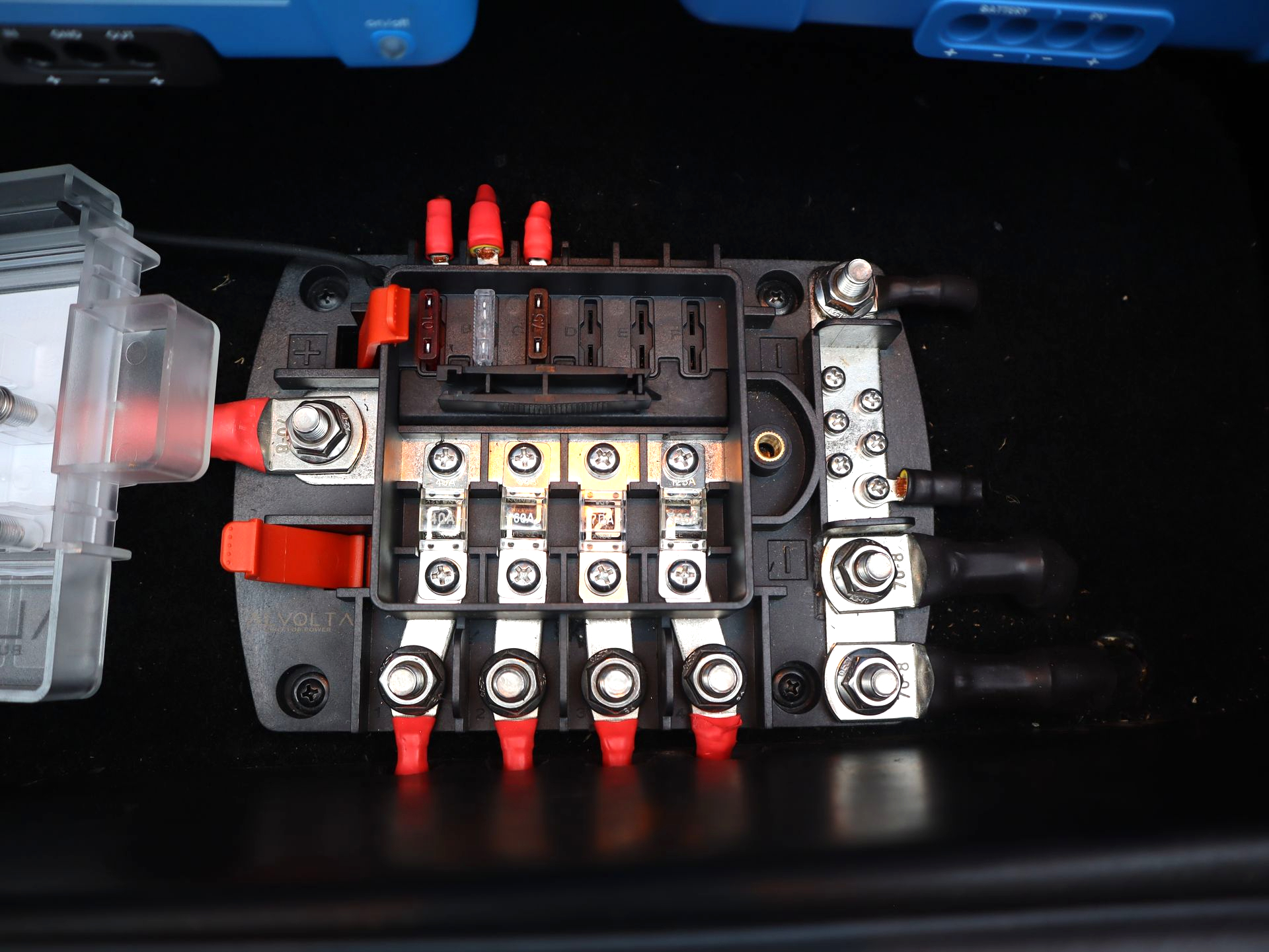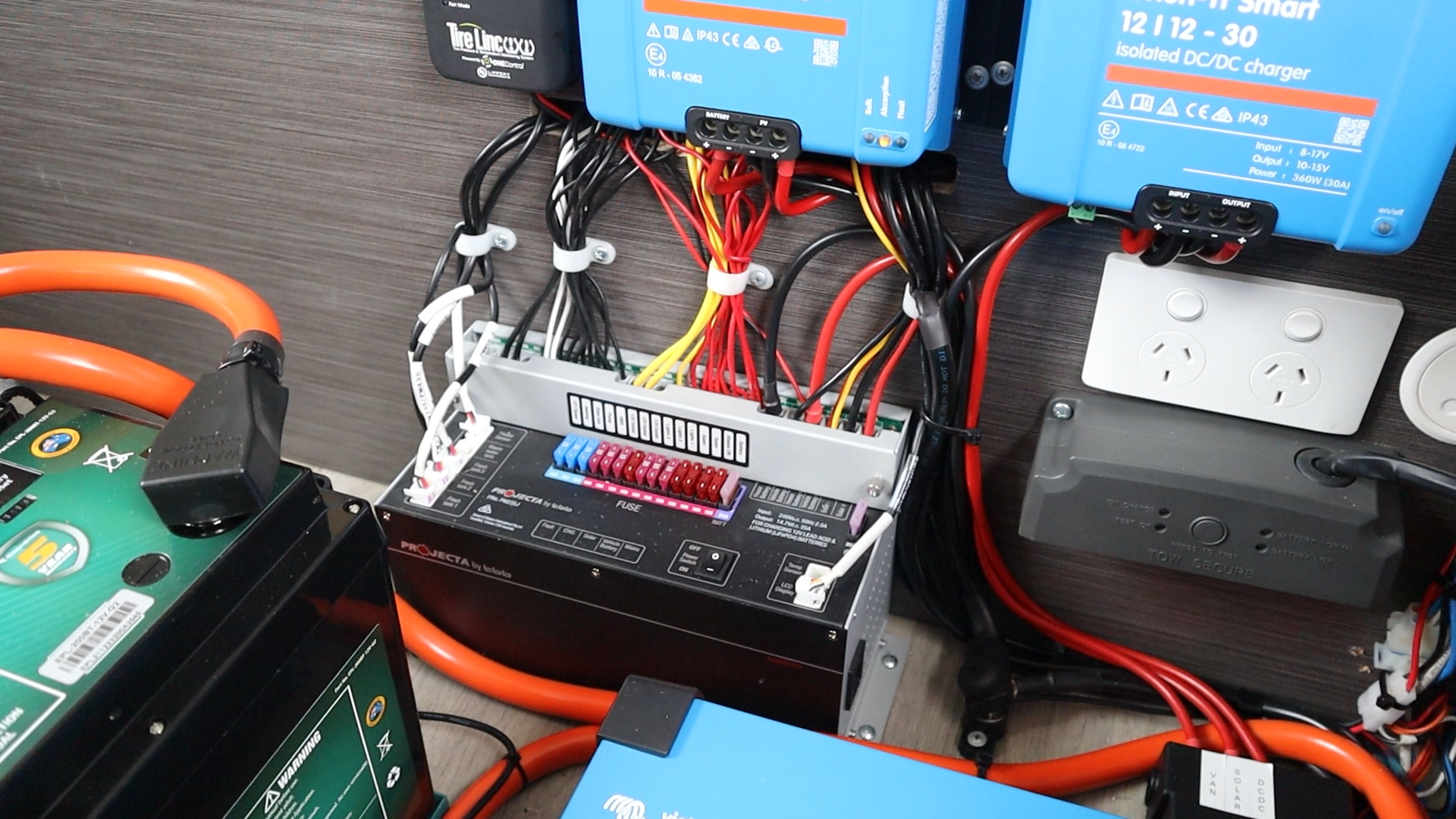Are you tired of the tangled mess of wires in your off-grid setup? A tidy DC wiring system isn't just about looks—it's about boosting efficiency, enhancing safety, and making your entire setup more manageable. For DIY enthusiasts, mastering DC wiring is a pivotal skill that can make all the difference in your off-grid adventures.
With the right approach, you can turn a chaotic cluster of cables into a streamlined, efficient power network that supports your needs seamlessly. The key to achieving this lies in proper organisation and utilising the best tools and techniques available. Whether you're working on a small van conversion or a large solar installation, these tips will guide you through the process of creating a clean and effective wiring setup.
Tip #1
Use All-in-One Fusing Boxes and Hubs
Using all-in-one fusing boxes and hubs can revolutionise the way you organise your DC wiring. These compact, integrated solutions streamline your connections, drastically cutting down on clutter and reducing the chance of potential issues.
Picture this: a tidy, consolidated wiring system that not only looks professional but also boosts the safety and efficiency of your entire setup.

All-in-one fusing boxes and distribution hubs offer a plug & play experience, simplifying installations and making the process significantly more manageable. These tools are particularly valuable for DCDC charger installations, as they can centralise all your fuses and connections into a single, easy-to-manage location, saving you time and effort.
Investing in quality fusing boxes and/or hubs eliminates the need for an abundance of separate components - which reduces the risk of wiring errors that could damage the whole system. When everything is efficiently contained in one component, it not only reduces the possibility of something going wrong but also makes it easier to troubleshoot in the event of the system not working how it’s supposed to.
This makes all-in-one solutions like fuse boxes and distribution hubs the perfect addition to an off-grid setup. They not only ensure your system is safe and reliable but are efficient in keeping your setup tidy and free of unsightly wiring messes.
Tip #2
Incorporate Cable Accessories
Using cable accessories might seem like a waste of time, but the benefit of including them in your DC setup is worth considering before jumping into running your cables.
Terminal covers, cable conduits, and proper cable glands are your go-to tools for a tidy and efficient DC system. Terminal covers shield exposed connections, preventing accidental shorts and enhancing overall safety. Cable conduits, on the other hand, offer a sleek way to bundle and protect multiple cables, reducing wear and tear over time.
Proper cable glands are crucial for maintaining the integrity of your connections. They ensure that cables entering or exiting enclosures are securely held in place, preventing any movement that could lead to wear or disconnections. By investing in high-quality cable accessories, you not only extend the life of your wiring but also maintain a polished, professional look.
Tip #3
Run Cables Together for Better Organisation
It might seem like a no-brainer to some, but running cables together is one of the most simple, yet impactful ways to create an organised and tidy DC setup. Not only does running your cables together minimise the sprawling mess of wiring, but it also offers some safety benefits as well.
Many installers or DIY-ers use cable ties or Velcro straps to secure bundles of cable in place. If you’re strategic about your setup, you can even map out where your cables will be going, so you can run the cables together and secure them at the right places. This approach ensures your wiring remains orderly, even as you add more components to your setup.

Grouping cables also helps you avoid potential hazards. Loose wires can easily get snagged or damaged, but when they're bundled, they're much more protected. This method is particularly beneficial for van conversions and other mobile setups where space is precious. By keeping your cables together, you can route them through tight spaces without compromising their integrity.
Moreover, this strategy contributes to better airflow around your electronics, reducing the risk of overheating. Properly bundled cables allow for efficient cooling, which is crucial for maintaining the longevity of your components. This means your DC setup not only looks good but performs optimally as well.
Read More: DC Circuit Protection Guide
Tip #4
Hide Cables in Cavities and Behind Objects
In addition to running your cables together, a neat way to tidy your DC setup is to hide the cables in and behind objects. This is an optimisation that takes a little bit of planning but is definitely worth the time.
You can utilise the often-overlooked spaces in your setup, like cavities behind walls, under floors, or behind furniture, to conceal your cables. Not only does this create a cleaner, more professional look, but it also safeguards your wiring from wear and accidental damage.
To make this process easier, we recommend planning your cable routes in advance. Map out where your components will be and identify the best paths to run your cables discreetly. As suggested above, you can also group your cables together during this process, maximising the organisation and safety of your DC wiring. With a bit of foresight, and sometimes creativity, you can achieve a tidy, efficient wiring setup that supports your off-grid adventuring seamlessly.

Tip #5
Opt for Pre-Wired Junction Boxes for Solar Panels
When incorporating solar panels into your DC setup, we recommend installing pre-wired junction boxes to streamline the setup. Designed to provide a simple plug-and-play solution, pre-wired junction boxes eliminate the need for intricate wiring and reduce the risk of errors in your wiring.
These junction boxes consolidate multiple connections into a single access point making your system neater without the unnecessary cables. Additionally, our pre-wired junction boxes are IP64-rated, making them ideal for the Australian climate. By including these in your solar installation, you benefit from a clean and tidy setup, as well as one that is water-resistant.
5 Tips To Tidy Your DC & Wiring Setup